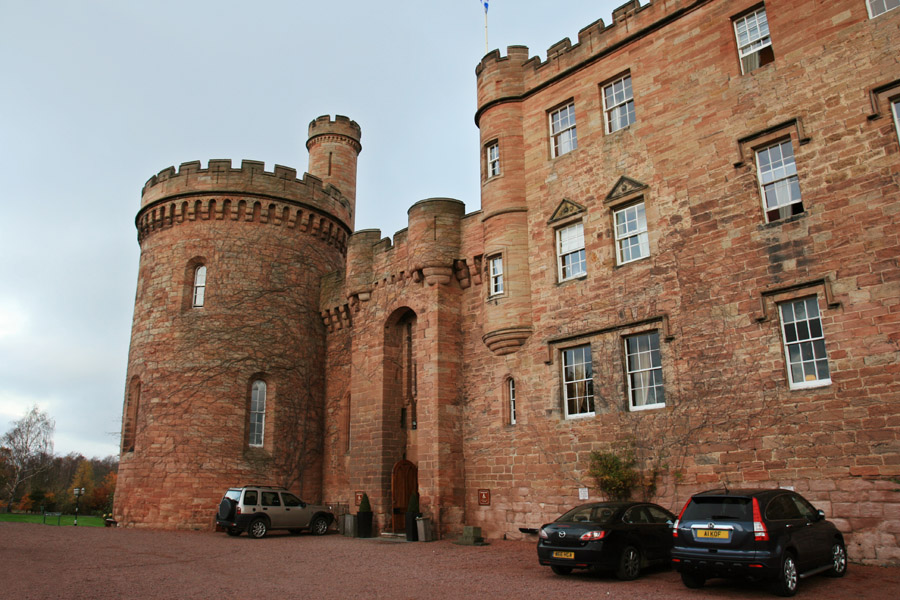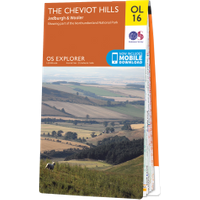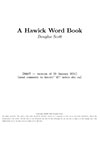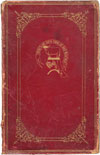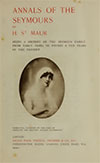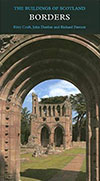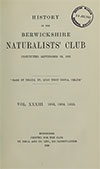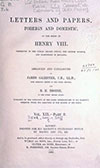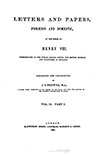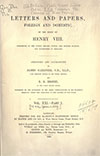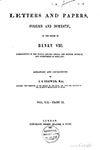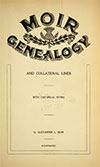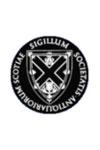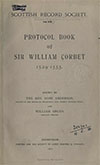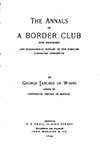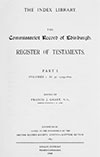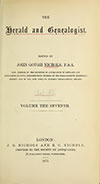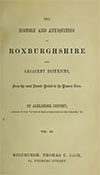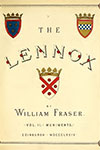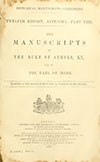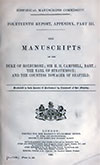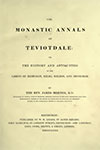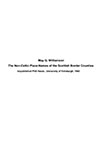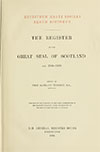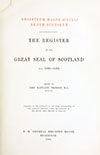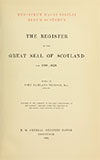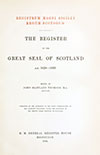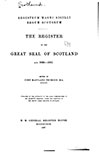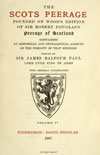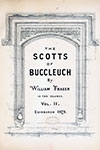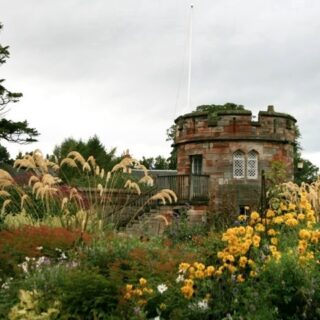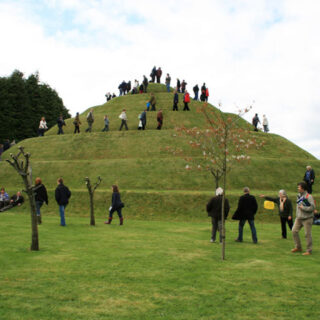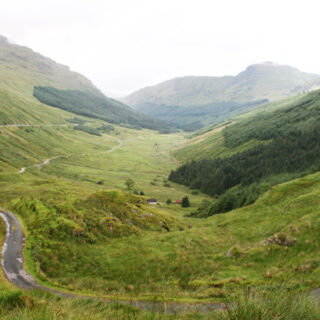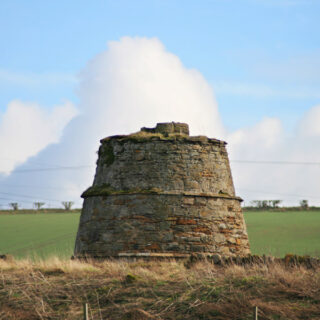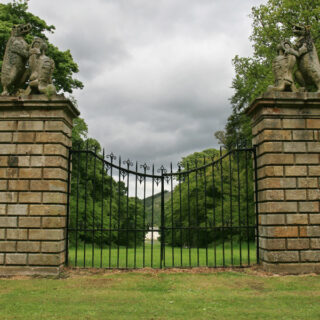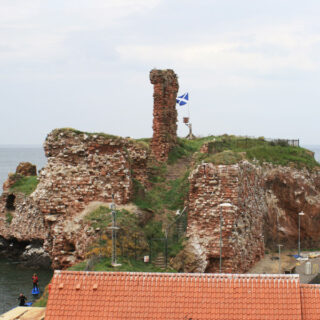
Gateshaw

Gateshaw was a tower belonging to the Ker family in the 16th century but nothing of it now remains.
The lands of Gateshaw were a possession of the monks of Melrose in the 12th century but by the mid-15th century they were held by Thomas Ker of Gateshaw, the third son of Andrew Kerr of Auldtounburn (and later of Cessford) and a daughter of William Douglas of Cavers.
The Kers of Gateshaw were also related to the Kers of Ferniehirst and held lands from the Kers of Cessford and the Archdeacon of Teviotdale. In 1455 Patrick Hume, Archdeacon of Teviotdale, was in dispute with the monks of Melrose regarding the tithes of Gateshaw and Cliftoncotis, a dispute in which Melrose was successful.
It seems likely that the Kers would have built a tower at Gateshaw given its strategic importance in the valley of the Kale Water on a route from England to the south. Gateshaw is located on flat ground between the lower slopes of Harrow Law to the west and the valley to the east.
It has been suggested that the original fortalice of Gateshaw was in fact the neighbouring Corbet Tower although there doesn’t seem to be any strong evidence that points to this. Certainly it later became a part of the Gateshaw estate but in the mid-15th century the lands of Corbet were held by Nicholas de Rwthirfurde suggesting that they were separate lands at that time.
The lack of visible remains of a tower at Gateshaw itself, and the later absorption of Corbethouse into the Gateshaw estate, may have led to the belief that Corbet Tower was the original tower of Gateshaw.
Unfortunately the first detailed map evidence for the area doesn’t occur until Blaeu’s Atlas of Scotland in the mid-17th century. Gaitshawtour is clearly marked immediately to the north of Gaitshaw and just across the Kale Water from Grange, now Hownam Grange. It would seem to be clear that Corbet Tower is represented by the tower named Gorbettho which is shown to the north of a tributary of the Kale Water, presumably the Corbet Burn, to the north-east of O. Whyttum (now Whitton), and to the west of the settlement of W. Grubett across the river. E. and W. Grubett can perhaps be equated with Over and Neyther Grobet. Further north, across the Kale from Grubbit Mill, is another apparent tower named Grubethous.
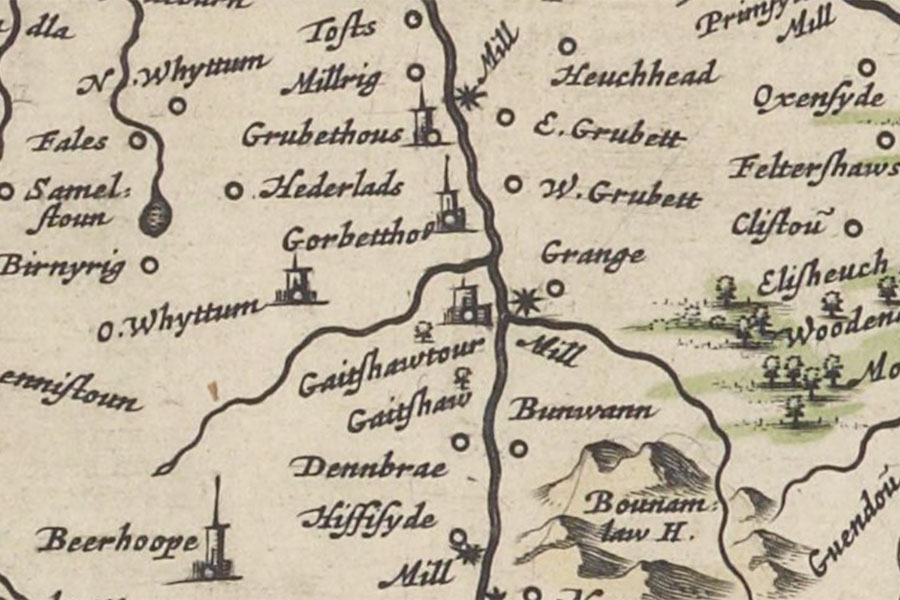
In 1471 or 1472 Margaret Ker, daughter of James Ker of Gateshaw, was contracted to marry John Home of Ersiltoun, Whitrig and Crailing and. Her tocher was 200 merks but if John was to become heir to Alexander Home of that Ilk a further 400 merks was to be paid.
Andrew Ker of Gateshaw appeared before the Abbot of Melrose in 1498 and swore that he wouldn’t take the herezeld of his tenants but would leave them to the Abbot. The herezeld was a feudal privilege to take the best animal of a tenant upon the tenant’s death.
Twelve years later in 1510 Andrew Ker of Gateshaw and Thomas Scott, brother of Philip Scott of Headshaw, were accused of the murder of John Murray of Falahill. Andrew’s son, Lancelot Ker of Gateshaw, and James Ker of Whiterig were his sureties.
Lancelot Ker, also known as Lance, was involved in two raids into England in 1515, one on Hazlerigg and one on Holburn, both in Northumberland. On the 12th of October “Lance Car, Laird of Gateshaw, Dande Car, Laird of Graden, Geo. Daveson of Fowmerden, the young Laird of Mowe, with others, to the number of 300, burnt the town of Hessilrig, took 30 prisoners and drove away fourscore kye and oxen, 30 horses and the insight.”
On the 5th of November “Mark Car, Laird of Dolphinstown, lieutenant of the Middle Marches of Scotland, Lance Car, Laird of Gateshaw, Dande Car, Laird of Graden, the young Laird of Mowe, Dande Pringle, constable of Cessfort, Geo. Daveson of Fowmerden, and others, to the number of 400, came to Corkleeche upon Mylnefeild, and put forth their foray, eight score horsed men, to the town called Holborne, robbed it of all the insight and of 200 kye and oxen, 30 horses, and took the principal inhabitants prisoners.”
Lancelot Ker’s raids into Northumberland are said to have led a retaliatory raid in April 1522 when an English force under Sir Anthony Ughtred “burnt the tower of Gaitshaw, and divers steads and hamlets”. Subsequently Gateshaw is said to have been “strengthened with the addition of another peel” which was known as New Gateshaw. It would seem likely that this new tower would have been relatively close to the original tower.
Lancelot Ker was evidently something of a troublemaker as he was one of the lairds and barons of Roxburgh who went to Jedburgh “to submit themselves to the king’s will, and found surety to enter before the justice when required, to underly the law for all crimes imputed to them” in May 1530 for breaking their bonds.
In April 1539 Walter Ker of Cesfurd infefted Lancelot Ker, “son of Andrew Ker of Gaitshaw, as nearest and lawful heir of his father” in liferent of “certain lands in Primsyd” and “four husbandlands, lying in the town and lordship of Hownam”.
In June 1542 Lancelot Ker of Gateshaw and John Mow of that Ilk pursued Mark Ker of Dolphinston at Jedburgh Sheriff Court for an annual payment of 200 pounds for the lands belonging to John Mow, with both Kers claiming his wardship.
The English attacked the area again on the 4th of July 1544 and a list of “towns and steads” burnt includes “Shapeley, Hownomkirk, Hownom Town, Hevesyde, Overgatesyde, Nethergatesyde, Corbet House, Grawbet Haugh, Mylberie, Growbet Mylne, both Growbetts, Hownome Graunge, the Deane Bray, Blake Jaks houses.” Following their progression north along the Kale Water from Hownam and Heavyside it would suggest that Overgatesyde and Nethergatesyde represent the old and new Gateshaws, or vice versa, while Corbet Tower is listed separately.
On the 29th of October that year some thirty-nine Teviotdale lairds, including George Ker of Gateshawe, pledged allegiance to Henry VIII, with hostages submitted to Sir Ralph Eure, the English Warden of the Middle Marches. This however did not stop Gateshaw from being attacked again in May 1545 by an English force under Sir Robert Constable, and in September 1545 an English army led by Edward Seymour, Earl of Hertford, worked its way along the Kale Water and burnt both Newe Gateshaughe and the Towre of Gateshaughe.
In October 1548 George Ker of Gaitschaw, along with Sir Walter Ker of Cessford, Mark Ker, Abbot of Newbattle, and Patrick Gray, 4th Lord Gray, was involved in an English raid led by Sir Richard Bowes into the lands of Sir Walter Scott of Branxholme and Buccleuch. The party burnt Newark Castle, of which Scott was Keeper, Hawick, Selkirk, and Scott’s lands in the valleys of Ale, Yarrow, Ettrick, Teviot, Slitrig and Borthwick, and burned Scott’s mother, Elizabeth Kerr, to death in Catslack Tower.
An agreement was signed in March 1564 between the Kers and their supporters and the Scotts and their supporters pledging not to attack one another, and George Ker’s brother, Richard Ker of Gaitschaw, was listed in it. The following year Richard was included in a list of Kers charged by Mary Queen of Scots for disobeying the Warden of the Middle Marches. In 1566 or 1567 Richard Ker of Gateshaw received a sasine of the lands of Prymsyd when he was infefted by Sir Walter Ker of Cesfurd as heir to his late brother.
Richard Ker of Gaitschaw died in November 1577. In February 1588 Markie Ker, brother of Lancie Ker of Gateshaw, and William Ker of Hartrop or Hayhope were accused of chasing and wounding William Methven, minister of Langton, on behalf of William Cockburn of Chouslie and his mother, Marioun. Neither Ker appeared at court and were denounced rebels.
Despite their involvement in various crimes the Kers of Gateshaw evidently enjoyed a certain status as in December 1635 Cicill or Cecilia Ker, daughter of Sir Robert Ker of Cessford, Earl of Roxburghe, was contracted to marry John Ker of Gateshaw with “her tocher to be 4000 merks, he to infeft her in lands yielding 88 bolls of victual yearly”.
John and Cecilia were granted a charter of Gateshaw in May 1644 and in the spring of 1645 the laird of Gateshaw contributed supplies, along with many other landowners in the area, to Kelso following an accidental fire which destroyed much of the town. He was appointed a commissioner of war for the county of Roxburgh but was dead by 1654 and was succeeded by his eldest son, Robert. In March 1661 Robert Kerr of Gateshaw was appointed Commissioner of Supply for Roxburghshire.
Robert was succeeded by his son, John, who in December 1749 sold Gateshaw to Sir William Scott of Ancrum, Bt. Gateshaw was only out of Ker hands for 9 years however as in 1758 Sir William sold it to William Ker, Town Clerk of Kelso and Chamberlain to John Ker, 3rd Duke of Roxburghe. William Ker was married to Elizabeth Elliot, daughter of Gilbert Elliot, formerly of Stonedge and Howa, and Cecily or Cecilia Kerr, daughter of William Kerr of Abbotrule.
It may have been William Ker who was responsible for remodelling Gateshaw. The house is thought to have been square in plan and consisted of two storeys and an attic over a partially-sunken basement. Whether the new house incorporated part of the old is not clear. A Venetian window towards the north end of the east façade’s ground floor is indicative of an 18th century date of construction, as is the spacing of the first floor windows on the main south façade and the piend roof with central platform. Also thought to date to this period are a stable block just to the north of Gateshaw House and Gateshaw Cottages, a row of three cottages around 200m further north.
In December 1765 William Ker bought the neighbouring estate of Corbethouse when Thomas Moir of Otterburn had his estates sold by judicial sale. This unification of the estates of Corbethouse and Gateshaw may have been partially responsible for the belief that Corbet Tower was originally the tower of Gateshaw.
William died in 1794 and was succeeded by his son, Gilbert, who was married to Margaret Hood, daughter of John Hood of Stoneridge. They had nine children and the size of their family is said to have led to financial problems. In 1801 Gilbert’s brother, Charles Ker, M.D., Assistant Inspector of Hospitals for the Army Medical Department, bought Gateshaw from his brother’s trustees. Despite this Gilbert retired to Gateshaw around 1818, Charles seemingly being resident at Corbethouse since his retirement in 1815.
Charles Ker was knighted by George III “for his distinguished services” in 1822 and in 1835 executed a disposition of his estate in favour of his nephew, Gilbert’s eldest son, William, a merchant in Liverpool. Two years later Sir Charles died unmarried and William succeeded to Gateshaw and Corbethouse. William Ker had married his cousin, Jane, third daughter of Ellis Martin.
It was probably William who around 1860 was responsible for extending and remodelling Gateshaw House. The ground floor of the main south façade was altered with the insertion of larger tripartite windows either side of a raised corniced porch. A bay window was added to the south end of the west façade and the house was extended to the north with the addition of a new wing.
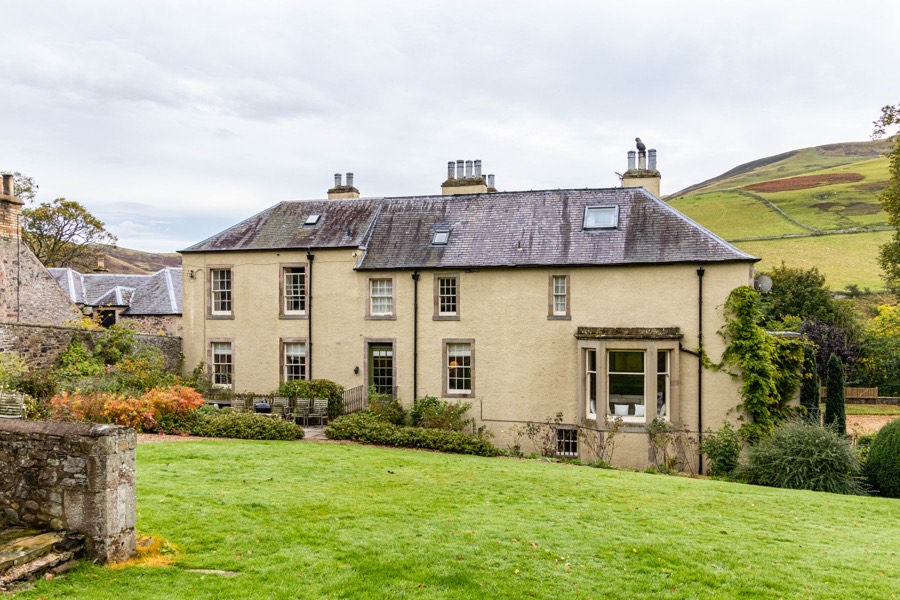
Around the same time Gateshaw farmhouse was built around 150m to the north of Gateshaw House. New Gateshaw Cottages, around 500m to the north of Gateshaw House, date from a similar period. Whether their name is simply to distinguish them from the older Gateshaw Cottages or an indicator of the position of the original New Gateshaw is unfortunately not clear. The original Gateshaw Cottages are thought to have been remodelled around this time.
When William died in 1864 he left Gateshaw in liferent to his widow and feu to his second son, Ellis Martin Ker. Jane died in 1872 and in 1873 Ellis sold Gateshaw to Christopher Douglas of Chesterhouse, Writer to the Signet, for £36,000.
Douglas died in November 1894 and was succeeded by his brother, Alexander Sholto Douglas of Chesterhouse and Gateshaw. In 1896 the Misses Douglas were resident at Gateshaw House, perhaps sisters or aunts of Alexander who resided at Corbet Tower.
By 1907 there was just one Miss Douglas resident at Gateshaw House and in August 1916 Alexander died and was succeeded by Robert William Cowan, a first cousin once removed of Douglas’s wife, Helen McCaul Forrester. Under the terms of the will Cowan assumed the additional surname of Douglas, becoming Robert William Cowan-Douglas. Robert died at Corbet House in 1934 and was succeeded by his son, Captain John Robert Cowan-Douglas of Gateshaw, who resided at Gateshaw House.
In 1953 Mrs A.B. Cowan-Douglas and Major General W.R. Stewart, CB, CIE, were both resident at Gateshaw House. The by then Major John Robert Cowan-Douglas died in 1970. Gateshaw House underwent a programme of restoration in the 21st century and is now leased as a holiday let.
The exact site of the towers of Gateshaw and New Gateshaw is unknown so I have placed the location at Gateshaw House pending further research.
Alternative names for Gateshaw
Gaetshawe; Gaitschaw; Gaitshaw; Gaitshawtour; Gate-shaw; Gateshall; Gateshaugh; Gateshaughe; Gateshaw House; Gateshawe; Gatschaw; Gatschawe; Gaytshaw; Nethergatesyde; New Gateshaw; New Gateshaughe; Overgatesyde; Toune Gaitshaw; Towngate Shaw; Towngate-shaws; Towngateshaw; Towre of Gateshaughe
